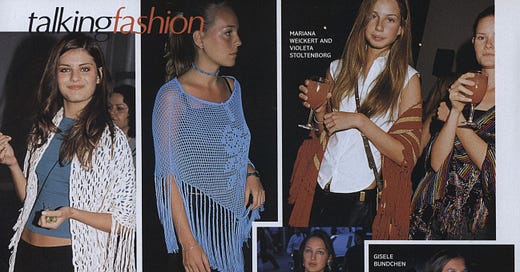All You Need Is a Sexy Summer Shawl
A deep dive into the '90s pashmina craze to shawls for weddings; with jeans and a T-shirt...anyways, I'm ready for the new era of the piece.
Today on #NEVERWORNS, I’m talking about the endless allure of the shawl. It might be the most erotic thing that many of us already have in our wardrobe. As always, subscribe and watch #NEVERWORNS, especially this freak-friendly episode with James Veloria. PS. …





